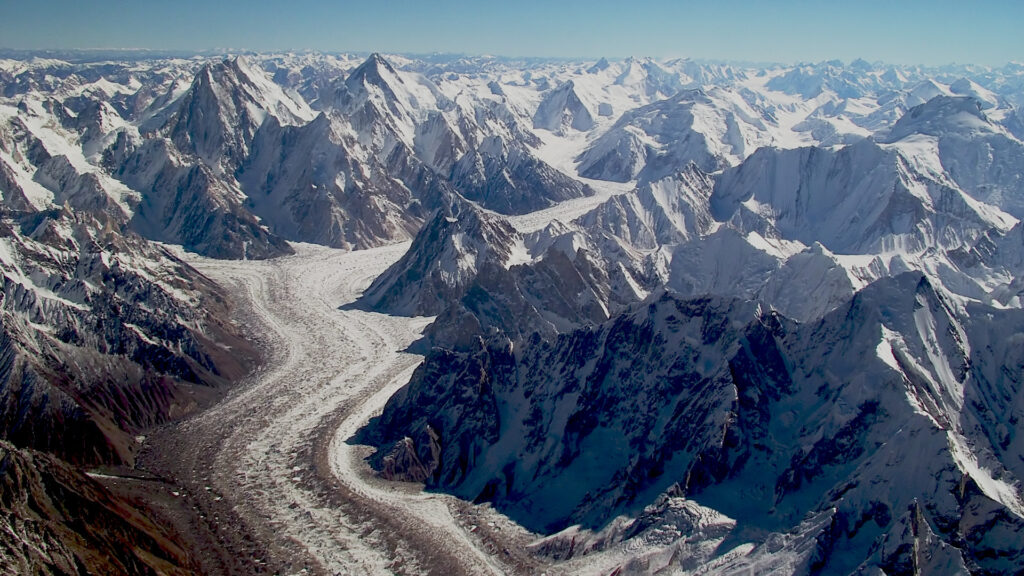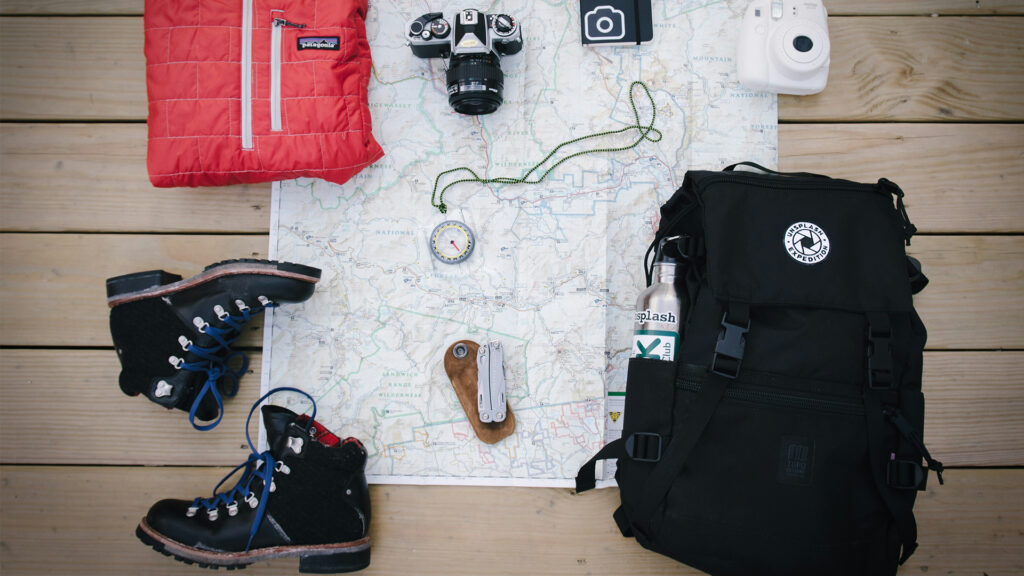High-altitude trekking in the Karakoram Mountains is one of the most rewarding adventures on earth. Home to legendary routes like the Baltoro Glacier Trek, K2 Base Camp Trek, and Gondogoro La Pass, the Karakoram attracts adventurers seeking rugged beauty and unparalleled mountain vistas. But trekking above 3,500 meters isn’t something you can simply walk into—it requires physical readiness, the right gear, and careful acclimatization.
If you’re planning a trek in Gilgit-Baltistan’s Karakoram range, this guide will help you understand how to prepare for high-altitude trekking, from training and gear selection to health precautions and mental readiness.

Why Preparation Matters for the Karakoram
The Karakoram is unlike most trekking regions. While there are beginner-friendly trails, most treks in this range involve walking at elevations of 3,500m–5,500m, where oxygen levels drop significantly. Without preparation, trekkers risk altitude sickness, fatigue, and injury. Proper planning not only makes the experience safer but also maximizes the enjoyment of standing amidst peaks like K2, Broad Peak, and Gasherbrum.
Step 1: Build Your Physical Fitness For the Karakoram
Cardiovascular Training
At high altitude, your lungs work harder. A solid aerobic base helps your body use oxygen efficiently. Start training at least 3–4 months before your trek. Recommended activities:
- Running or jogging (3–4 times per week)
- Cycling or swimming for endurance
- Stair climbing or step-ups to simulate uphill trekking
Strength Training
Carrying a backpack over uneven terrain demands strong legs and core stability. Incorporate:
- Squats, lunges, and step-ups
- Deadlifts and planks for core strength
- Weighted hikes to simulate carrying gear
Flexibility and Balance
Yoga or stretching sessions improve recovery and balance on rocky trails.
Tip: Simulate trekking conditions by hiking in your boots with a loaded backpack on weekends.
Step 2: Acclimatization and Altitude Readiness for Karakoram Treks
Understand Altitude Sickness
At high elevations, your body gets less oxygen. Symptoms of Acute Mountain Sickness (AMS) include headache, nausea, and fatigue. Severe forms like HAPE (High Altitude Pulmonary Edema) or HACE (High Altitude Cerebral Edema) can be life-threatening.
Acclimatization Guidelines
- Ascend gradually: Never increase your sleeping altitude by more than 500m per day once above 3,000m.
- Rest days: Plan acclimatization days at Skardu, Paiju, or Urdukas on treks like Baltoro.
- Hydration: Drink at least 3–4 liters of water daily.
- “Climb high, sleep low”: Trek higher during the day but descend to sleep at a lower elevation when possible.
Medication Options
- Diamox (Acetazolamide) can help with acclimatization, but consult your doctor before using it.
Tip: Know your limits. If symptoms worsen, descend immediately.
Step 3: Gear and Packing Essentials for Karakoram Treks

The Karakoram is remote and conditions vary from scorching valleys to icy glaciers. Packing the right gear ensures safety and comfort.
Clothing Layers
- Base layer: Moisture-wicking thermal tops and bottoms.
- Mid layer: Fleece or down jacket for insulation.
- Outer layer: Waterproof and windproof shell.
- Accessories: Gloves, warm hat, buff, and sunglasses (UV protection is critical on glaciers).
Footwear
- Sturdy trekking boots with ankle support and crampon compatibility (for treks crossing snow or ice).
- Gaiters for snow and dust protection.
- Several pairs of wool and synthetic socks.
Sleeping Gear
- Sleeping bag rated to –15°C or lower
- Sleeping pad or inflatable mat for insulation
Other Essentials
- Trekking poles for stability
- Headlamp with extra batteries
- First aid kit (with blister pads, rehydration salts, and personal medicines)
- Water purification tablets or a filtration system
- Snacks like energy bars, nuts, and dried fruit
Tip: Keep gear lightweight but reliable. Every extra kilogram matters on long treks.
Step 4: Nutrition and Hydration
At high altitude, your body burns more calories and dehydrates faster.
- Balanced diet: Prioritize carbs for energy, proteins for recovery, and healthy fats for endurance.
- Snacks: Carry high-energy foods for quick boosts during long trekking days.
- Hydration: Drink frequently, even if you don’t feel thirsty. Avoid excessive alcohol or caffeine as they dehydrate the body.
Step 5: Mental Preparation
Trekking in the Karakoram isn’t just a physical challenge—it’s a test of patience and resilience. Conditions can change quickly, and routes often require long days of walking over rugged terrain.
- Set realistic expectations: It’s not a luxury holiday; it’s raw adventure.
- Stay positive: A strong mindset helps overcome fatigue and discomfort.
- Group spirit: If trekking with a team, cooperation and morale matter as much as individual endurance.
Step 6: Travel Logistics for the Karakoram
Permits and Paperwork
Most treks in Gilgit-Baltistan require permits, especially near border regions. Expeditions to peaks and restricted areas are regulated. Book through licensed tour operators to handle logistics.
Timing Your Trek
- Best season: June to September
- Shoulder months (late May, early October) may bring unpredictable weather.
Guides and Porters
Hiring local guides and porters not only provides safety but also supports the local economy. Many have generations of experience in the Karakoram.
Step 7: Safety and Responsible Trekking
- Emergency evacuation: Ensure your tour operator provides rescue support if needed.
- Insurance: Get trekking and mountaineering insurance that covers altitudes up to 6,000m or higher.
- Leave no trace: Respect the fragile environment—pack out all waste.
- Cultural respect: Learn basic greetings in Balti or Shina and respect local customs.
Popular Beginner-Friendly High-Altitude Treks in the Karakoram
If you’re new to trekking in Gilgit-Baltistan, here are accessible but rewarding treks to consider:
- Fairy Meadows & Nanga Parbat Base Camp (3,300m–3,800m) – Lush meadows with panoramic views of Nanga Parbat.
- Khosar Gang Peak (6,401m, trekking peak) – A great introduction to 6,000m climbing.
- Phander Valley Trek (2,800m–3,400m) – Known for its turquoise lake and serene landscapes.
- Baltoro Glacier & Concordia (up to 4,600m) – Demanding but doable with good preparation. Find out why the Baltoro Glacier trek should be on every adventurer’s bucket list.
- Snow Lake & Hispar Pass Trek (up to 5,200m) – A magical glacier experience for adventurous trekkers.
Conclusion
Preparing for high-altitude trekking in the Karakoram is about more than packing a backpack—it’s a journey of physical conditioning, mental resilience, and respect for the mountains. With the right preparation, even challenging routes like the Baltoro Glacier or a 6,000m peak become achievable, turning dreams of walking among the world’s highest mountains into unforgettable memories.
So, if you’ve been thinking about it, start training, get your gear ready, and take the first step. The Karakoram is waiting.


